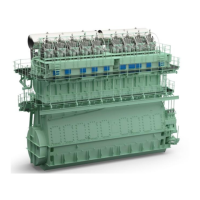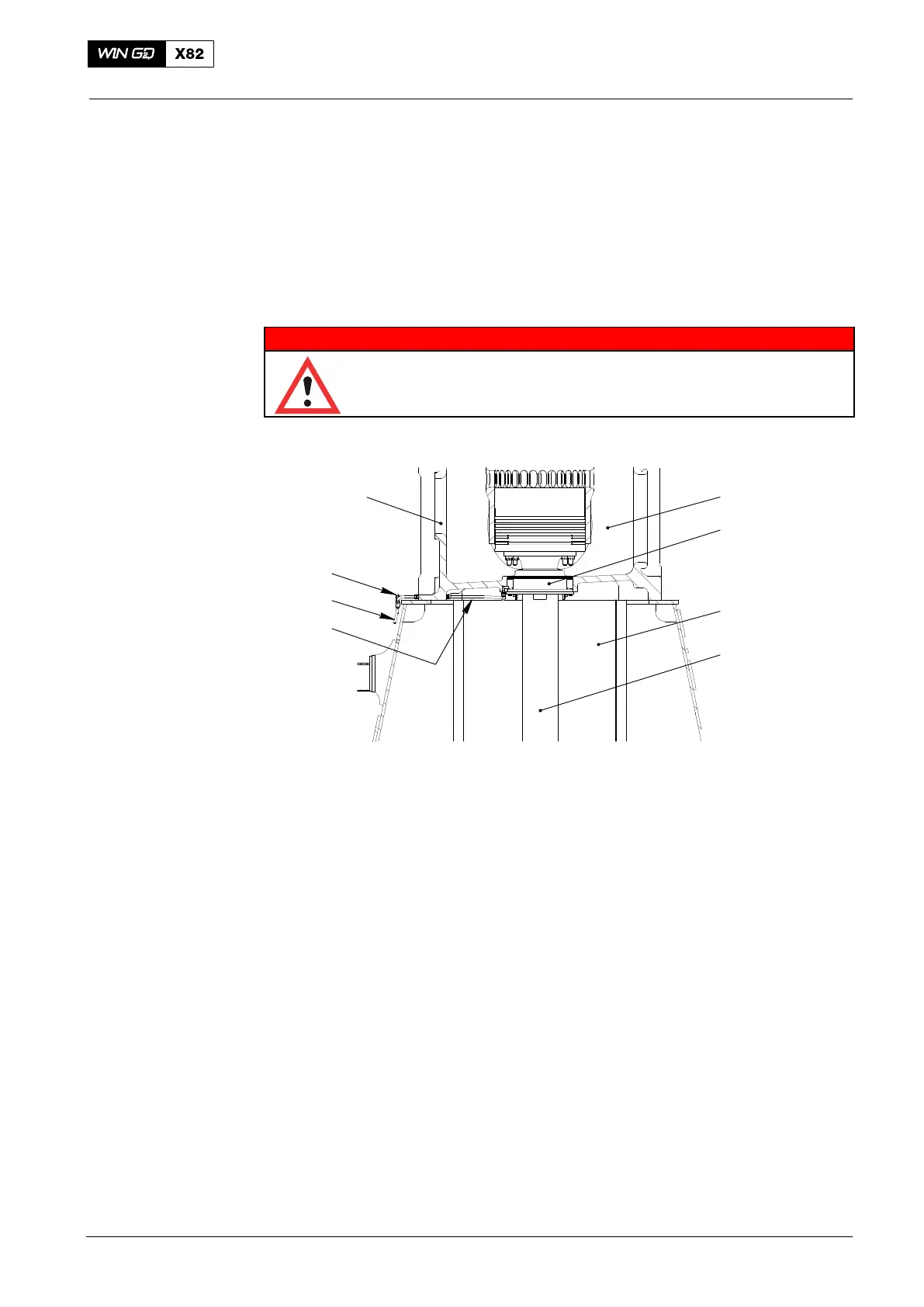Operation
2303−1/A1
Winterthur Gas & Diesel Ltd.
1/ 2
Piston Rod Gland
1. General
The piston rod gland (1, Fig. 1) keeps the dirty oil in the scavenge space (SS) and
prevents contamination of the bearing oil. Also, the piston rod gland box seals the
scavenge air from the crankcase (2).
Damaged gaskets cause an increase in the quantity of oil in the leakage oil drain. You
use the sample port (SP) to get an oil sample. You can measure this sample, and/or
send the sample to the laboratory to make an analysis.
WARNING
Danger: The leakage oil drain (LD) must not become clogged (see
0240−1. There is a dangerous risk of fire if the dirty oil does not
flow away from the area (see 0450−1).
2
SS
SP
LP
WCH01179
LD
1
3
4
Fig. 1: Location of Piston Rod Gland Box
1 Piston rod gland LD Leakage oil drain
2 Crankcase LP Leakage oil pipe
3 Piston rod SP Sample port
4 Cylinder block SS Scavenge space
2. Function
During operation, the three scraper rings (3, Fig. 2) and (5) remove dirty oil from the
piston rod (11). The dirty oil flows through the oil bores (OB) and collects in the
bottom of the scavenge space (SS). The dirty oil flows out through the leakage oil
drain (LD) on the fuel side.
The two 4-part gaskets (6) and (7) prevent the release of scavenge air into the
crankcase. The low scavenge air pressure is released through a vent in the plant.
The oil that flows through the relief passages (RP) into the neutral space (NS) flows
into the oil drain (LD).
The four ring supports (4) hold the eight scraper rings (5) in position. The scraper
rings remove bearing oil from the piston rod (11). This bearing oil flows through the
bearing oil drain (BD) to the crankcase.
The extension springs, (8) and (9), keep the scraper rings (3) and (5) against the
piston rod (11).
2014

